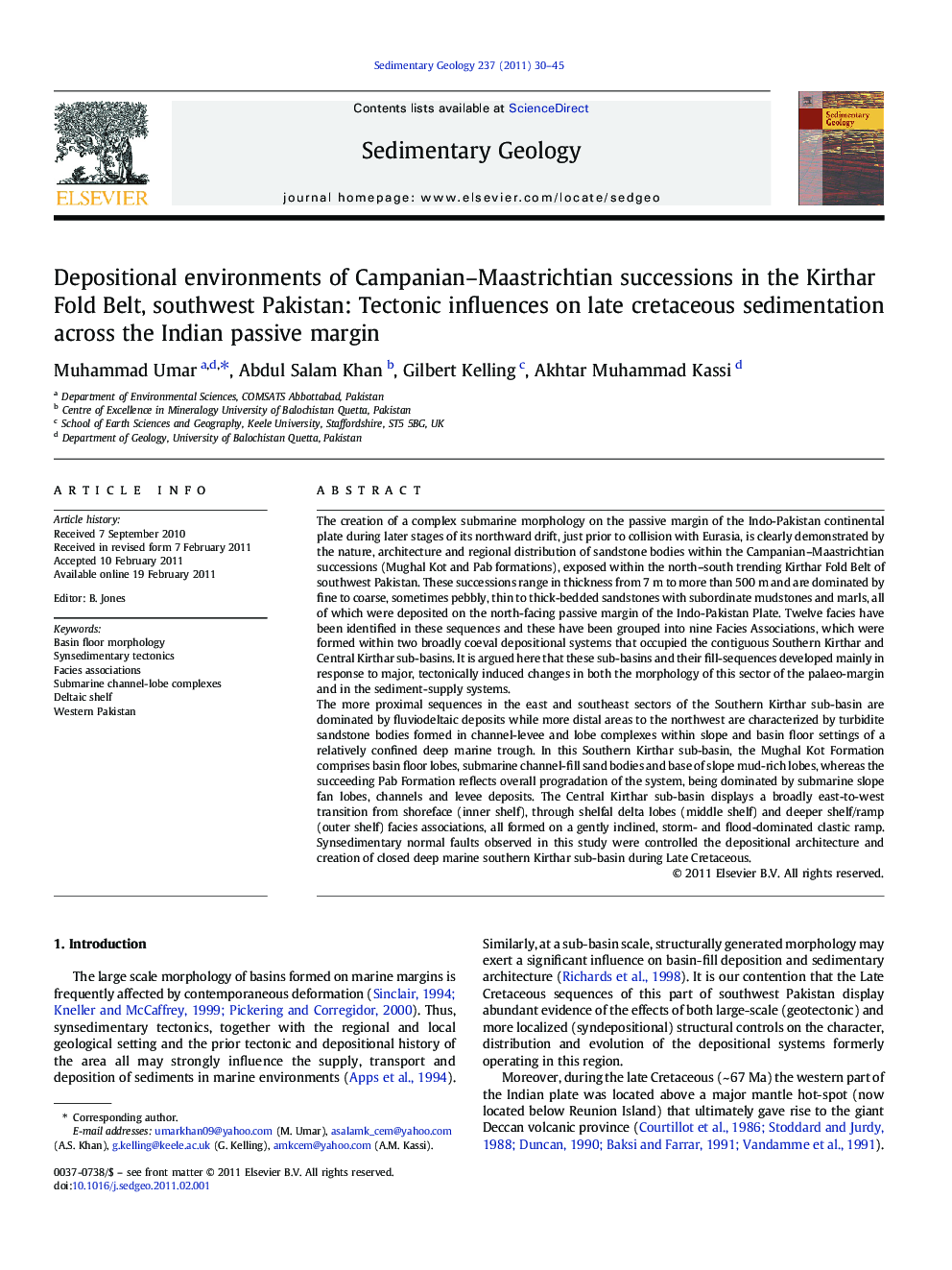| Article ID | Journal | Published Year | Pages | File Type |
|---|---|---|---|---|
| 4689969 | Sedimentary Geology | 2011 | 16 Pages |
Abstract
The more proximal sequences in the east and southeast sectors of the Southern Kirthar sub-basin are dominated by fluviodeltaic deposits while more distal areas to the northwest are characterized by turbidite sandstone bodies formed in channel-levee and lobe complexes within slope and basin floor settings of a relatively confined deep marine trough. In this Southern Kirthar sub-basin, the Mughal Kot Formation comprises basin floor lobes, submarine channel-fill sand bodies and base of slope mud-rich lobes, whereas the succeeding Pab Formation reflects overall progradation of the system, being dominated by submarine slope fan lobes, channels and levee deposits. The Central Kirthar sub-basin displays a broadly east-to-west transition from shoreface (inner shelf), through shelfal delta lobes (middle shelf) and deeper shelf/ramp (outer shelf) facies associations, all formed on a gently inclined, storm- and flood-dominated clastic ramp. Synsedimentary normal faults observed in this study were controlled the depositional architecture and creation of closed deep marine southern Kirthar sub-basin during Late Cretaceous.
Related Topics
Physical Sciences and Engineering
Earth and Planetary Sciences
Earth-Surface Processes
Authors
Muhammad Umar, Abdul Salam Khan, Gilbert Kelling, Akhtar Muhammad Kassi,
